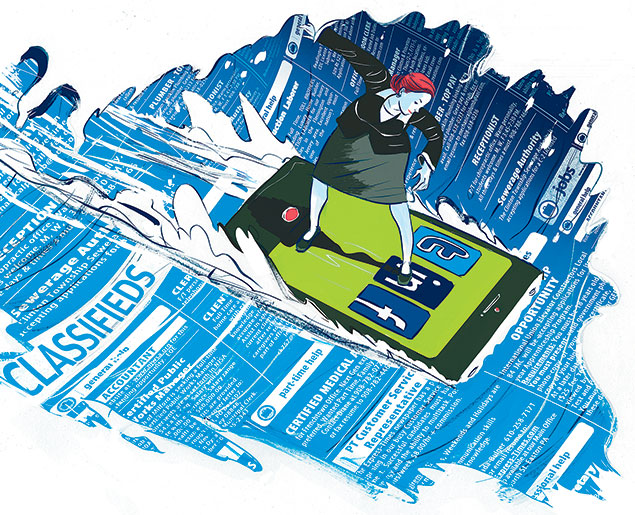As the adage goes, when it comes to finding a new job, it’s not what you know but whom.
In today’s social-media-driven climate, platforms such as LinkedIn, Twitter, and Facebook are valuable for discovering career opportunities. According to a 2012 survey by Jobvite, 93 percent of recruiters use LinkedIn to find job candidates, 66 percent use Facebook, and 54 percent use Twitter. But they each have distinct differences.
LinkedIn is best for “passive job seekers.”
With more than 238 million members, LinkedIn has long been known as a good place to post your résumé and skills and to connect with professionals in your field. The website analyzes a variety of data, including user profiles and their searches, and offers recommendations for jobs they may be interested in while also suggesting their profiles to recruiters. LinkedIn may provide the biggest plus to so-called passive job seekers—people who aren’t actively searching for a new job but who may attract a recruiter’s attention.
Twitter builds your personal brand.
Though its messages are limited to 140 characters, Twitter can paint a fuller picture of a candidate’s personality and interests through past tweets and followers. An article posted by AOL Jobs told the story of an executive at the networking and security company Enterasys who wanted to hire a social-and-digital-marketing manager and considered only candidates who contacted him via Twitter. The Atlantic’s Alexis Madrigal wrote in July that he hired a writer straight out of college simply because of the man’s Twitter presence—not his number of followers but his ability to connect like-minded people and engender thoughtful discussion.
Others find success by following companies they’re interested in and keeping an eye out for opportunities, or by using search engines such as TwitJobSearch, which combs tweets for relevant postings.
When Jillian Wishart moved from Washington to New York with her husband for his job, she used Twitter to find a new position. “My search began with a quick brainstorm of companies I loved,” she says. Wishart landed on a camera-bag company called ONA and inquired about openings via Twitter. A day later, she got a direct message informing her of a position. “I applied, interviewed twice, and had the job within three days of living in New York.”
Facebook turns your friends into recruiters.
Appropriately, Facebook as a job-seeking tool is driven by personal relationships. A company survey of 3,000 users found that those who had lost their job and communicated through Facebook with close friends were more likely to find a new position within three months, perhaps because people are willing to pass along résumés for close friends. Others network via Facebook by researching potential contacts and connecting through mutual friends—like a personal reference minus the formality.
Regardless of the platform, here are tips for using social media to find a job:
• Make your profile as complete as possible, including an appropriate photo, and present yourself as knowledgeable about your field.
• Share relevant information about your interests. For example, employers like to see mentions of professional organizations you’re a part of as well as volunteer work.
• Show personality, but also be professional—trashing your current job is never a good idea. Jobvite also found that nearly half of the recruiters reacted negatively to profanity and to mentions of alcohol, sex, and drug use.
• Fox Business recommends treating social-media content as mini-writing samples, a way to display critical thinking and insight. And don’t underestimate the importance of proofreading: Fifty-four percent of recruiters disapproved of postings with grammar and spelling errors.



















